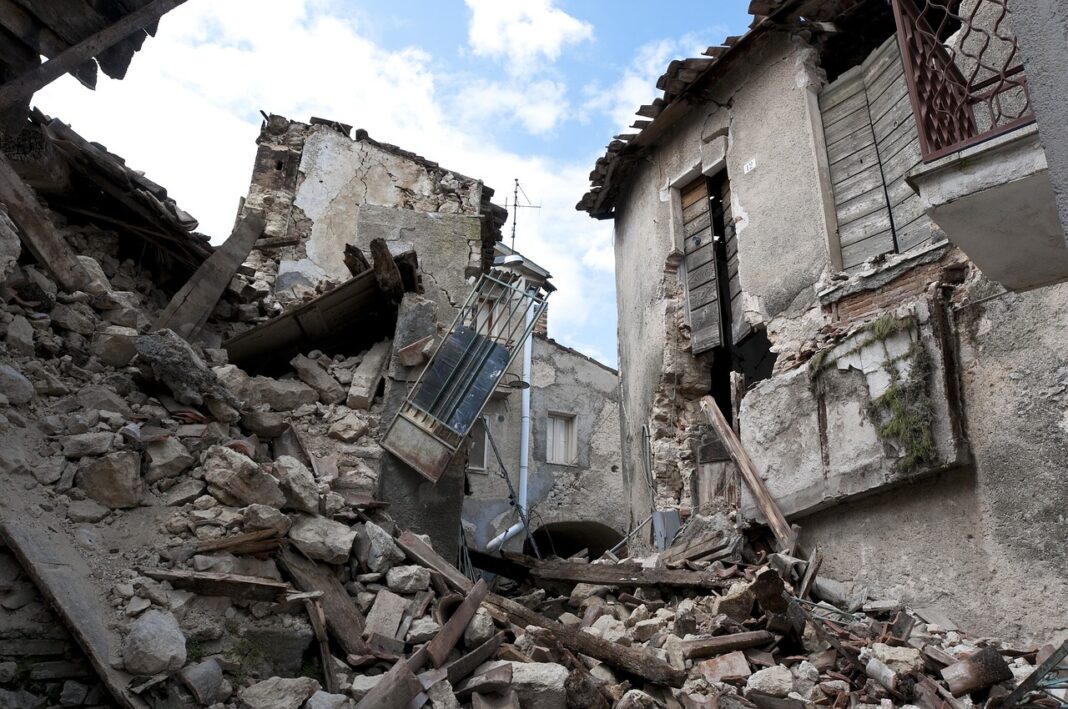The ground is suddenly shaking and there you are wobbling left and right to keep your balance. You notice the picture frames on your mantle are shaking and the chandelier above you is swaying back and forth. This unfortunate phenomenon is called an earthquake.
An earthquake is a natural disaster that happens millions of times per year, across all the different parts of the world. Some earthquakes are huge and cause immense amounts of damage, while others are so small that you can hardly feel them. The damage-causing, more powerful earthquakes can cause many negative after-effects too. Such as tsunamis, landslides, and even flooding! But luckily, the monumental earthquakes don’t occur too often.
The humble beginnings of earthquakes begin deep down below the surface. Thousands of miles below your feet. Imagine this analogy: The Earth’s core is the yolk, the mantle is the white stuff, and the crust is the shell. All humans and other living things live on the surface of the shell. Below the surface, but still above the crust are huge slabs of rock. These are called the tectonic plates. Across the Earth, there are 7 major tectonic plates: the African, Antarctic, Eurasian, Indo-Australian, North-American, Pacific, and South American. Because there are many bodies of water surrounding and in between these tectonic plates, we can make an educated guess that these plates are not connected.
When immense amounts of heat escape from the Earth’s core, and creates currents in the crust. These currents then cause the tectonic plates to bump, scrape, or drag across each other (like bumper cars), causing what we now know today as an earthquake.
Most earthquakes that occur commonly are too small, too far below the surface, or too deep in the seafloor to be felt. But on the other hand, the more destructive ones are so powerful that no matter how deep they are, they can still be felt by us and continue to cause havoc. The spot where an earthquake starts, just above the surface, is called an “epicenter”. This epicenter transmits ripples, called seismic waves, allowing us to feel the earthquake’s vibrations.
To measure these earthquakes, scientists have involved a scale called the “Richter scale”. The higher the earthquake measures on the scale, the more powerful it is. If it measures in between 3 to 4.9, it would be considered a “minor earthquake”. From 5 to 6.9 would be considered “Moderate” or “Strong”. 7 to 7.9 would be considered “Major”, while anything above 8 is a “Great” (even though the impact of it would be the opposite of great).
Knowing what to do is vital if you ever find yourself in the middle of an earthquake. If you are indoors- make sure to stay there. Try to get under a desk or a table and hold onto it until the shaking stops. Or, try and move into a hallway or against an inside wall. You should never go near windows, fireplaces, heavy furniture, or appliances because the risk of injury is too high. Do not rush outside when the building is shaking because you may get hit by falling glass or debris. If you are outside, make sure to get into vastly open areas. Stay clear of buildings, powerlines, chimneys, or anything that can fall on you. If you are driving and an earthquake occurs, make sure to get as far away from traffic as possible and stop driving immediately. Wait inside your car until the shaking stops, and slowly maneuver your way to safety.
After reading this blog post, I hope that you are better educated on what earthquakes are and how to stay safe if you ever find yourself in one!
Resources:

